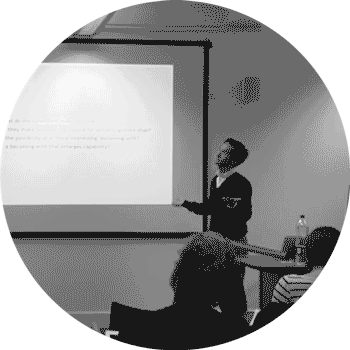
Last Wednesday, tried again to capture my thoughts on capability and capacity, this time at the UCL Knowledge Lab (Institute of Education). The recording of the talk is available here.
Category: Talks
Talk at RCA, Design Products
I had a very generous slot for presenting to some in Design Products at the RCA this week.
In this talk, I want to suggest we have spent too much time working with the limits of capability—the limits of the perceptual apparatus, the limits of cognitive capacities, and the limits of how critters (whether human or nonhuman) interact and relate to one another. Drawing on a feminist technoscience and using examples from recent fieldwork, I’ll aim to show that, together, we make ourselves capable. That capability isn’t limited to some pre-given, individual state, but comes into being through (inter)action, through entangled relations between actors of all kinds. This, I’ll claim, gives us a very different way of thinking about our relations with technology and especially the promise of AI and machine learning. Rather than machines aiming to replicate human capability, I want to propose an expansive project that allows us the chance to imagine something ‘other-than’ finite capabilities, that sees capability as a ‘becoming-with’, and lays open the possibilities for much much more.
On Counting
Kat Jungnickel kindly invited me to a two day meeting as part of her continuing series of Transmissions and Entanglements events. Amidst others working through new methods and processes, here’s what I had to say for myself on counting:
What is it to count and to be counted?
One way I have made sense of my work over the last 10 years at Microsoft has been to see it as a way of getting to grips with counting and in some ways coming to terms with being counted.
(more…)
Presenting “Data in place”
We’re presenting a paper at CHI this year on Tenison Road.
Alex S. Taylor, Siân Lindley, Tim Regan, David Sweeney, Vasilis Vlachokyriakos, Lillie Grainger, Jessa Lingel (2015), Data-in-Place: Thinking through the Relations Between Data and Community, CHI 2015.
Here’s the abstract:
We present findings from a year-long engagement with a street and its community. The work explores how the production and use of data is bound up with place, both in terms of physical and social geography. We detail three strands of the project. First, we consider how residents have sought to curate existing data about the street in the form of an archive with physical and digital components. Second, we report endeavours to capture data about the street’s environment, especially of vehicle traffic. Third, we draw on the possibilities afforded by technologies for polling opinion. We reflect on how these engagements have: materialised distinctive relations between the community and their data; surfaced flows and contours of data, and spatial, temporal and social boundaries; and enacted a multiplicity of ‘small worlds’. We consider how such a conceptualisation of data-in-place is relevant to the design of technology.
Talk at “Austerity Futures?”
Abstract for upcoming talk at Austerity Futures? seminar 4.
 [Big] data futures, from the street.
[Big] data futures, from the street.
Stories about big data are everywhere. We’re being told how significant the impact of big data will be on our lives by all kinds of people in the know. And yet I’ve been grappling with what (big) data might really mean to people who aren’t fully signed up members of the digerati, those shapers, makers and moders of technological futures. I’ve pondered, in short, on two simple questions: how does data matter to ‘people on the street’, and how might they want it to matter. In this talk, I’ll reflect on a project we’ve been building up at Microsoft Research to begin working through these questions. I want to discuss our efforts to ground a technological imaginary in ordinary life or, to put it another way, to enable a productive re-imagining of ‘big data futures’—to coin a phrase—from ‘the street’. I’ll describe how we’ve taken this challenge quite literally. Just over three weeks ago we began working with one street in Cambridge, Tenison Road. For at least a year, we plan to think through what data means for the Tenison Road community and in some cases to enable ways for the community to intervene in the future imaginaries. Although this won’t be a talk or for that matter a project about austerity, I certainly think it is one in which austerity and its repercussions will come to matter. My aim, then, will be to reflect on how this is a project concerned with futures, futures that are heavily concentrated in the minds of the technological elite, but also some that are more pedestrian that might just offer alternative possibilities for what (big) data could mean and what we might do with it.
web: tenisonroad.com | email: [email protected] | twitter: @tenisonroad
Talk at INCITE-ing Transformation in Social Research

On Saturday (12 Oct) I presented a short paper reflecting on INCITE’s achievements over the last 10 or so years at “INCITE-ing Transformation in Social Research”
Preamble
Referencing her New Media’s Intermediaries article, I want to glimpse back to reflect on how Nina Wakeford positioned INCITE and made sense of it against a back drop of cultural theory, science and technology studies, CSCW and sociology
.. And, in doing this, I also want to peer forward, to consider what troubles there might be ahead, and what productive possibilities we might imagine for ourselves. (more…)
